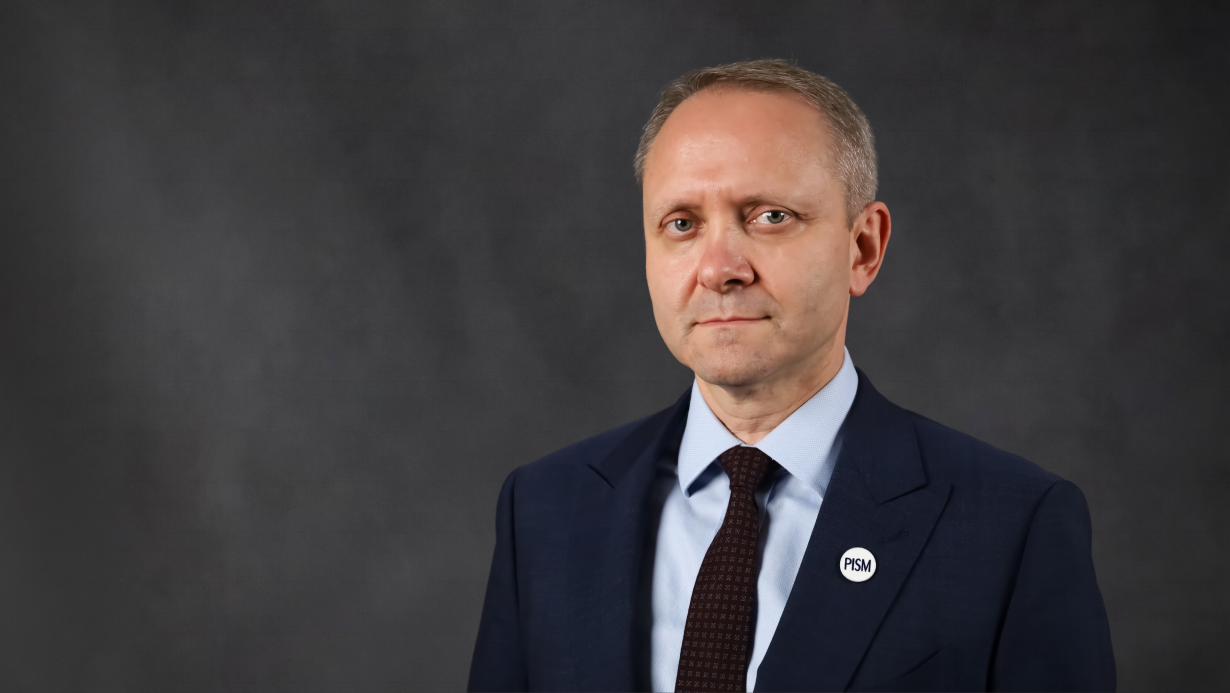NATO Vilnius Summit Takes Crucial Decisions
At the NATO summit in Vilnius on 11-12 July, the Allies approved new defence plans, which should be augmented with the development of bigger and better-equipped forces. The Alliance also adopted a new support package for Ukraine, but did not offer an invitation or clear timetable for Ukraine’s membership.
.jpg) EUC / Zuma Press / Forum
EUC / Zuma Press / Forum
What is the significance of the NATO defence plans approved in Vilnius?
NATO’s new plans create a basis for effective defence against large-scale Russian aggression. These are the first plans since the end of the Cold War that specify how NATO will react to an attack and with what forces (probably 300,000 troops or more). The earlier ones, including those adopted after 2014, were more general and included much smaller forces. Three regional plans were approved this time, for the the North Atlantic and Northern Europe, Central Europe from the Baltic Sea to the Black Sea and the Alps, and for Southern Europe. They address two major threats: Russia, which may rebuild its military potential to the level before the invasion of Ukraine, and terrorist groups. After the Turkish president’s decision to let Sweden into NATO, it may become a member later this year and be included in the new plans, which will significantly increase the defence in the Baltic Sea region. The implementation of the plans will require multi-billion euro investments, increasing numbers of troops, expanding training programmes, and organising large-scale exercises. Maintaining political and public support for such significant defence investments may prove challenging. That is why the Allies have committed to spend at least 2% of GDP on defence, and not, as has been the case so far, only to strive to achieve this level.
What kind of support did NATO offer to Ukraine?
The Alliance has adopted a package of support for Ukraine that consists of three elements. The first is a mechanism of long-term assistance to facilitate Ukraine’s transition to NATO standards. However, due to concerns of drawing NATO into a conflict with Russia, the most significant military assistance still will be provided on a bilateral basis and coordinated through the Ukraine Defence Contact Group (the Ramstein format). During the summit, some countries made new commitments to deliver advanced types of weapons crucial for the success of Ukraine’s counteroffensive, for example, France promised long-range SCALP missiles and Germany another battery of the Patriot system. The second element is the creation of the NATO-Ukraine Council, which grants Ukraine a special status, enables regular consultations, and is intended to facilitate integration with the Alliance. The third is a political declaration on Ukraine’s future membership in NATO. The Alliance has stated that Ukraine does not need a Membership Action Plan (MAP), which the Alliance refused to grant to Ukraine in 2008 for fear of provoking Russia. At the same time, NATO stipulated that Ukraine must carry out reforms in its democratic and security sectors, and that the invitation to join the Alliance will be possible when the member states agree to it and the necessary conditions are met. The specific conditions, however, were not presented.
Do the Alliance’s decisions bring Ukraine closer to NATO membership?
The declaration adopted by NATO indicates that Ukraine's accession process may be shortened. Ukraine obtains a similar status to Sweden and Finland, which did not have to go through the MAP process. However, it does not offer any timetable for a possible invitation. Some of Ukraine’s allies are concerned that formal promises would deny Russia the incentive to stop the aggression. The Biden administration also wanted to reduce the risk that NATO will be drawn into conflict with Russia by admitting Ukraine too quickly while the war is ongoing. Although the declaration does not grant new commitments to start membership negotiations, the creation of the NATO-Ukraine Council may facilitate Ukraine’s accession. Council meetings may be convened by the Secretary General or any member state, which will make it difficult for a single member, such as Hungary, to block Ukraine’s political and practical cooperation with the Alliance. The Council will provide Ukraine with new opportunities to exert political pressure on Allies to strengthen Ukraine’s defences, suport neccessary reforms, and welcome Ukraine into the alliance. Until the necessary conditions for such a decision are in place, Ukraine will be able to rely on bilateral security commitments. During the summit, the G7 countries (France, Japan, Canada, Germany, the U.S, the UK, and Italy) and Ukraine adopted a joint declaration in which they announced the start of negotiations on such formal arrangements. Ukraine will receive long-term support in equipment and armaments, as well as additional assistance in the event of new aggression from Russia.
How is NATO adapting to threats from China?
On China, the summit was mainly about political signalling. The Allies warned China not to support Russia with lethal aid. NATO also reiterated the provisions of the Madrid strategy, which states that China’s policy is a challenge to the Alliance’s values, interests, and security, and that the situation in the Indo-Pacific directly affects the security of the Euro-Atlantic area. NATO is strengthening political relations with Japan, South Korea, Australia, and New Zealand (via the format the Asia-Pacific Four, AP4), which were once again invited to the summit. NATO and the AP4 announced in Vilnius that they will strengthen cooperation on new technologies and combating hybrid threats and in cyberspace. However, it was not possible to establish a NATO liaison office in Tokyo due to opposition from, among others, France, which is concerned that China and other countries in the region will react negatively to such a step. NATO’s growing commitment to the security of the Indo-Pacific is driven by the Alliance’s will to strengthen transatlantic relations, as the U.S. regards China, not Russia, as its main strategic rival. The United States expects the Alliance to become a forum for coordinating its policy towards China with its European allies and regional partners. However, this does not automatically mean NATO’s military involvement in the Indo-Pacific, because, according to the Washington Treaty, the Alliance can conduct a collective defence mission only in the Euro-Atlantic area (Europe, North America, and the Atlantic).



